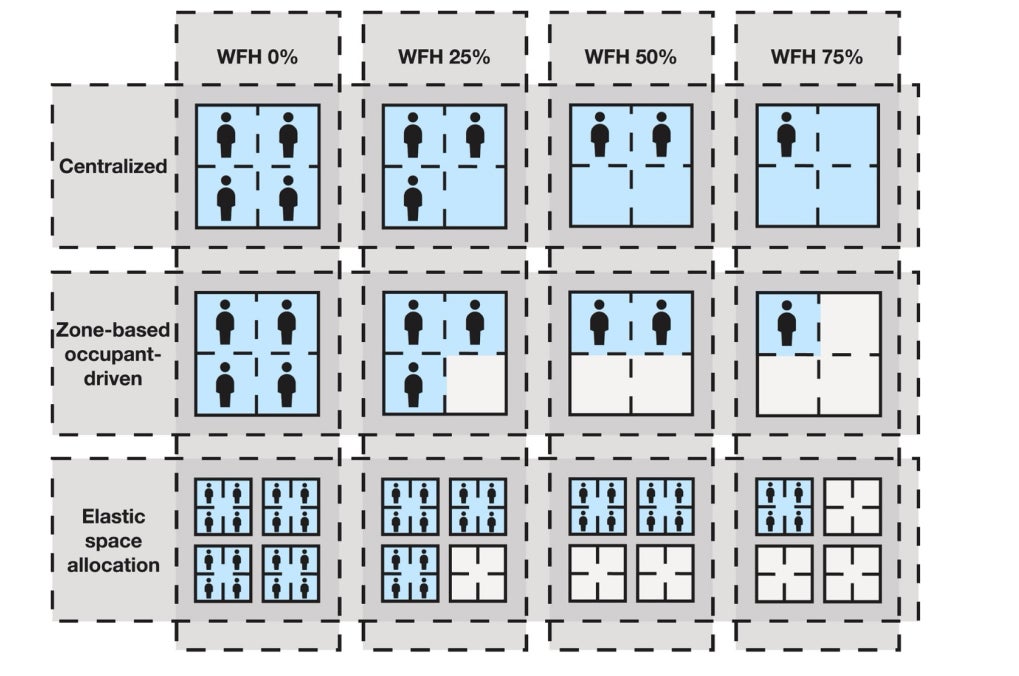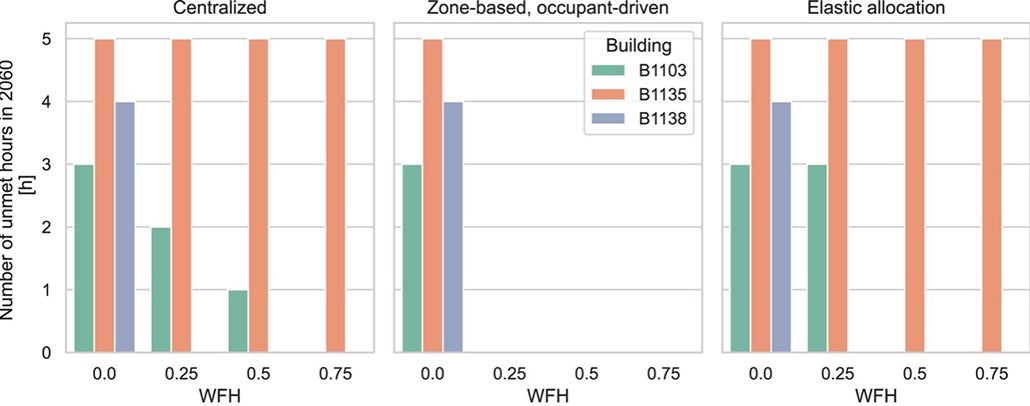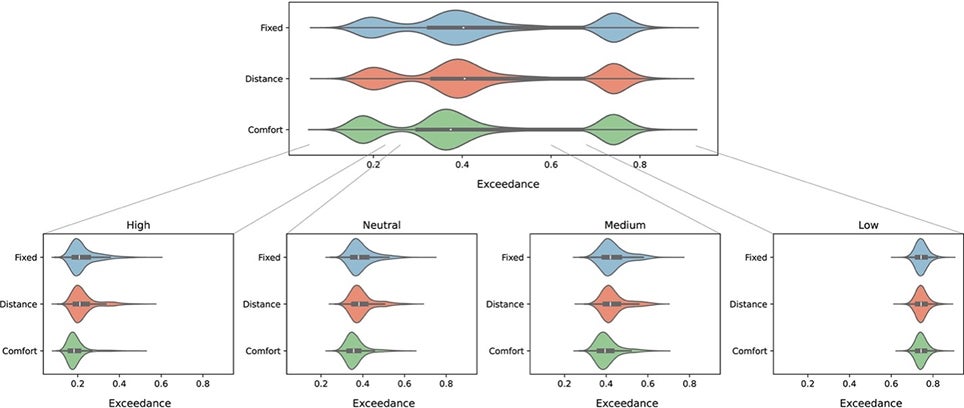Leveraging data for energy efficiency and climate resilience
More smart data from sensors and other devices will make it easier to see what kind, and how much, of energy each building needs, based on how the occupants adjust energy usage to their own comfort. Can such data-driven models help urban planners create even more flexible workspaces for a climate-resilient future?

Dr Martín Mosteiro Romero,
Postdoctoral researcher in the Department of Architectural Engineering and Technology at the Technical University in Delft, was previously a postdoctoral research fellow at NUS, working on an urban digital twin to help improve the resilience of building systems and their occupants’ wellbeing.
In the context of the global climate crisis, the world’s cities are facing a twofold challenge. On the one hand, there is a need to increase building energy efficiency and reduce carbon emissions in order to contribute to climate change mitigation. On the other hand, increasing temperatures in urban areas pose a risk to human health, particularly during extreme weather events, and therefore, the built environment needs to adapt to climate change in order to ensure the wellbeing of the buildings’ occupants.
At the same time, data is now increasingly available from a variety of sources in urban areas, including smart meters, telecommunications providers, sensors and Internet-of-Things devices. Such information can help with more informed planning decisions, and adjust operations to the changing needs of building occupants. Urban Digital Twins seek to combine these large-scale data sources along with simulations in order to support decision-making in both planning and operating sustainable urban districts.
This project leverages cross-scale datasets, including campus-scale WiFi records, building energy demands, and subjective thermal comfort feedback data from building occupants, to develop models to support energy efficiency and climate at the district to urban scale. In particular, the potential was explored for operational flexibility to maximise energy efficiency while providing comfort for different users at the district scale.
In the workplace, the increasing prevalence on flexible work arrangements, in which people no longer have a single workspace, but can share different spaces or even work remotely based on any given day, presents potential challenges, as building systems are typically designed to be operated under the assumption of full capacity. However, flexibility also presents an opportunity to create workspaces that support the needs of different occupants, allowing people to choose environments that match their personal needs and comfort preferences. Therefore, this project sought to create data-driven models of building energy demand and occupant comfort-related behaviours to support decision-making on workspace flexibility at the district to urban scale.
Occupant-driven district operation for energy efficiency and climate resilience
In order to demonstrate the potential of operational flexibility [1], a building energy demand model was developed of the NUS campus, using the software tool, City Energy Analyst (CEA). CEA is an urban building energy modeling (UBEM) platform, as well as one of the first open-source initiatives of computation tools, for the design of low-carbon and highly energy-efficient cities. Building-scale cooling and electricity demand data was then used to calibrate the building energy demand model, while campus-scale WiFi records helped to incorporate the varying occupancy patterns of different buildings into this model.
This baseline was then compared to scenarios in which different shares of occupants were working remotely, as well as with three different building operation strategies: a status quo building system; a scenario in which cooling systems were operated only based on actual occupancy; and an elastic allocation scenario, in which occupants would book their workspaces on campus. Thus, just like the power grid, only the most efficient buildings would be operated during partial occupancy, with inefficient buildings used only during peak demand (i.e., at full occupancy).

The results showed that the energy demand of buildings without occupant-driven controls would not be strongly affected by building occupancy, and therefore merely incorporating these sensing technologies would significantly reduce space cooling demand at the district scale. The implementation of elastic space allocation policies, on the other hand, would allow the operation of the least energy-efficient buildings to be avoided unless absolutely necessary, thus leading to further reductions in the building energy demand.

CITY ENERGY ANALYST (CEA)
CEA is a set of open-source tools that enable people to analyse and optimise
the energy use of buildings and districts.
For more details, visit their site.
Looking at future performance, when the numbers of unmet load hours for the cooling systems (i.e., the hours when building systems could not cope with the demand) were compared, for the baseline operation strategy, some of the buildings’ systems could not cope with demand for some hours by 2040, even at low occupancy. Implementing occupant-driven controls ensured that this problem was avoided for all but full occupancy. However, since the elastic allocation strategy ensured space use in energy efficient buildings was maximised, additional cooling capacity for that scenario was needed, as well. Therefore, the implementation of occupant-driven controls could also support the resilience of these buildings.

Agent-based modeling of occupants: Crowdsourcing data for personal comfort and energy efficiency
A second study [2] sought to investigate how workspace flexibility could support building occupants’ thermal comfort, and how building operation could be adjusted to best support this goal while increasing energy efficiency. For this purpose, an agent-based model of building occupants was created at campus scale, again leveraging campus-scale WiFi data as well as subjective thermal comfort feedback data collected through the smartwatch application Cozie. With this model, the daily activity and location choices of students and employees at NUS were mimicked, as well as their thermal preferences as a function of building indoor temperature.

A comparison was then made of the status quo (in which building occupants have specific assigned spaces where they would work or study) with scenarios in which occupants could flexibly choose the location for these activities in order to minimise the distance traveled between activities, or to maximise their comfort.
The campus energy demand model discussed above was then used to analyse different building operation strategies to support this transition. Varying indoor temperatures in different buildings on campus were explored to provide different indoor environments to satisfy the diverse thermal preferences of building occupants. The use of occupant-driven ventilation and cooling system operation strategies were also explored in order to minimise energy consumption.
Through this approach, it was estimated that occupants’ exceedance (defined as the number of hours that occupants spent in uncomfortable conditions) could be reduced by around 10% with these flexible allocation strategies, without a significant increase in building cooling demand. Furthermore, any increase in cooling demand was far outweighed by the savings obtained through the implementation of occupant-driven controls for the ventilation and cooling of the buildings.

These two works demonstrate the potential for combining cross-scale data sources towards the planning and the operation of climate-resilient buildings that minimise cooling demand while supporting the thermal comfort needs of users in flexible working and studying arrangements in a simulated environment. Incorporating these models into an urban digital twin [3] can provide decision-makers (such as facilities management, system operators and urban planners) with a user-friendly platform to explore these different scenarios, and to choose strategies to meet the goals of climate change adaptation and mitigation.
The increasing availability of open-access urban scale datasets has since allowed for expanding the scope from the district to the urban scale [4, 5], which opens up exciting opportunities to pursue further opportunities to support decarbonisation and wellbeing in urban areas.
References
[1] M. Mosteiro-Romero, C. Miller, A. Chong and R. Stouffs, "Elastic buildings: Calibrated district-scale simulation of occupant-flexible campus operation for hybrid work optimization," Building and Environment 237, 110318, 2023.
[2] M. Mosteiro-Romero, M. Quintana, R. Stouffs and C. Miller, "A data-driven agent-based model of occupants’ thermal comfort behaviors for the planning of district-scale flexible work arrangements," Building and Environment 257, 111479, 2024
[3] P. Alva, M. Mosteiro-Romero, W. Pei, A. Bartolini, C. Yuan and R. Stouffs, "Bottom-up Approach for Creating an Urban Digital Twin Platform and Use Cases," in HUMAN-CENTRIC, Proceedings of the 28th International Conference of the Association for Computer-Aided Architectural Design Research in Asia (CAADRIA), Ahmedabad, India, 2023.
[4] M. Mosteiro-Romero, Y. Park and C. Miller, "Converging Smartwatch and Urban Datasets for Sustainable City Planning: A Case Study in Seoul, South Korea," E3S Web of Conferences 562, 03004, 2024.
[5] P. Alva, M. Mosteiro-Romero, C. Miller and R. Stouffs, "Mitigating operational greenhouse gas emissions in ageing residential buildings using an Urban Digital Twin dashboard," Energy & Buildings 322, 114681, 2024.

